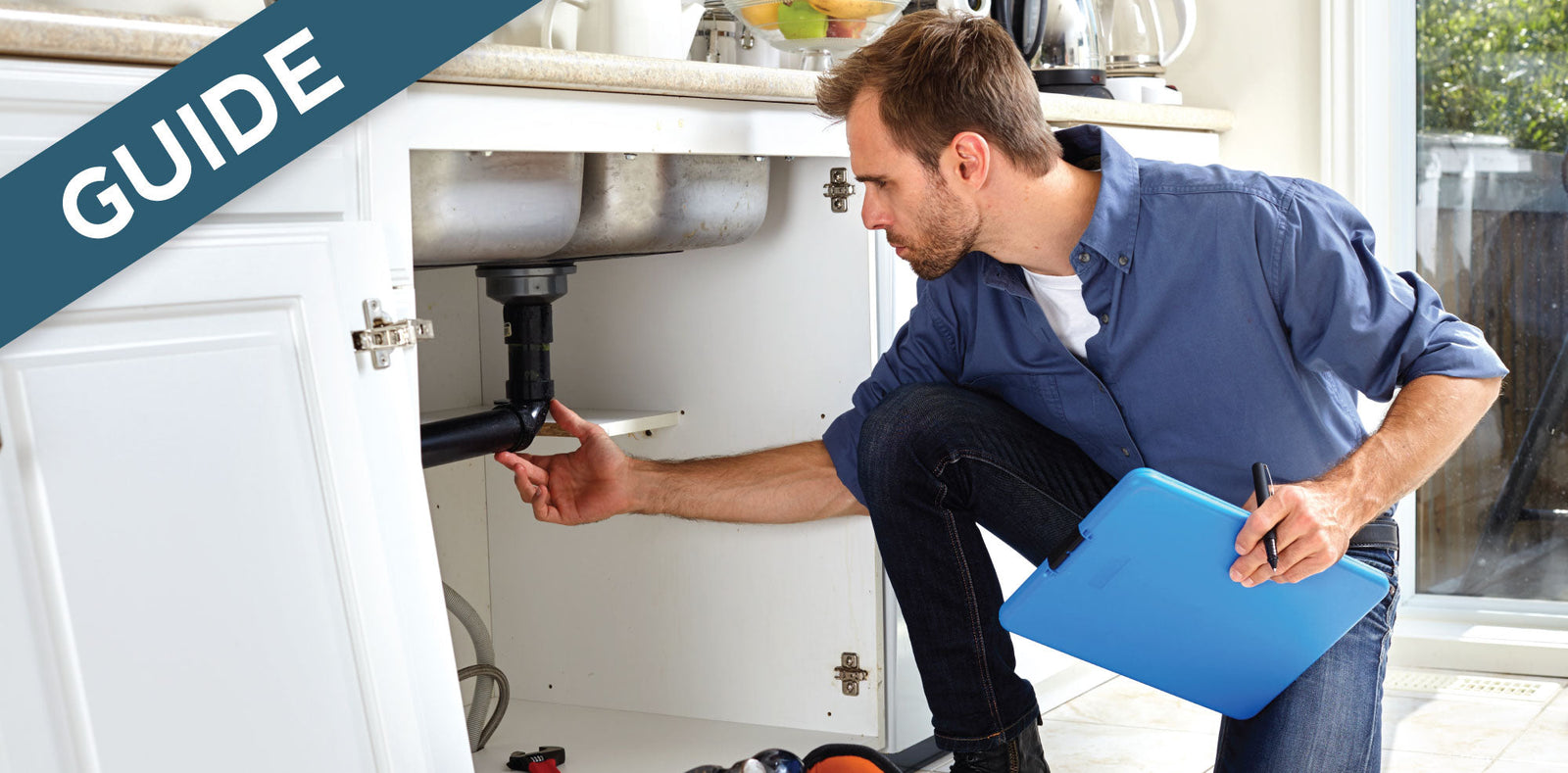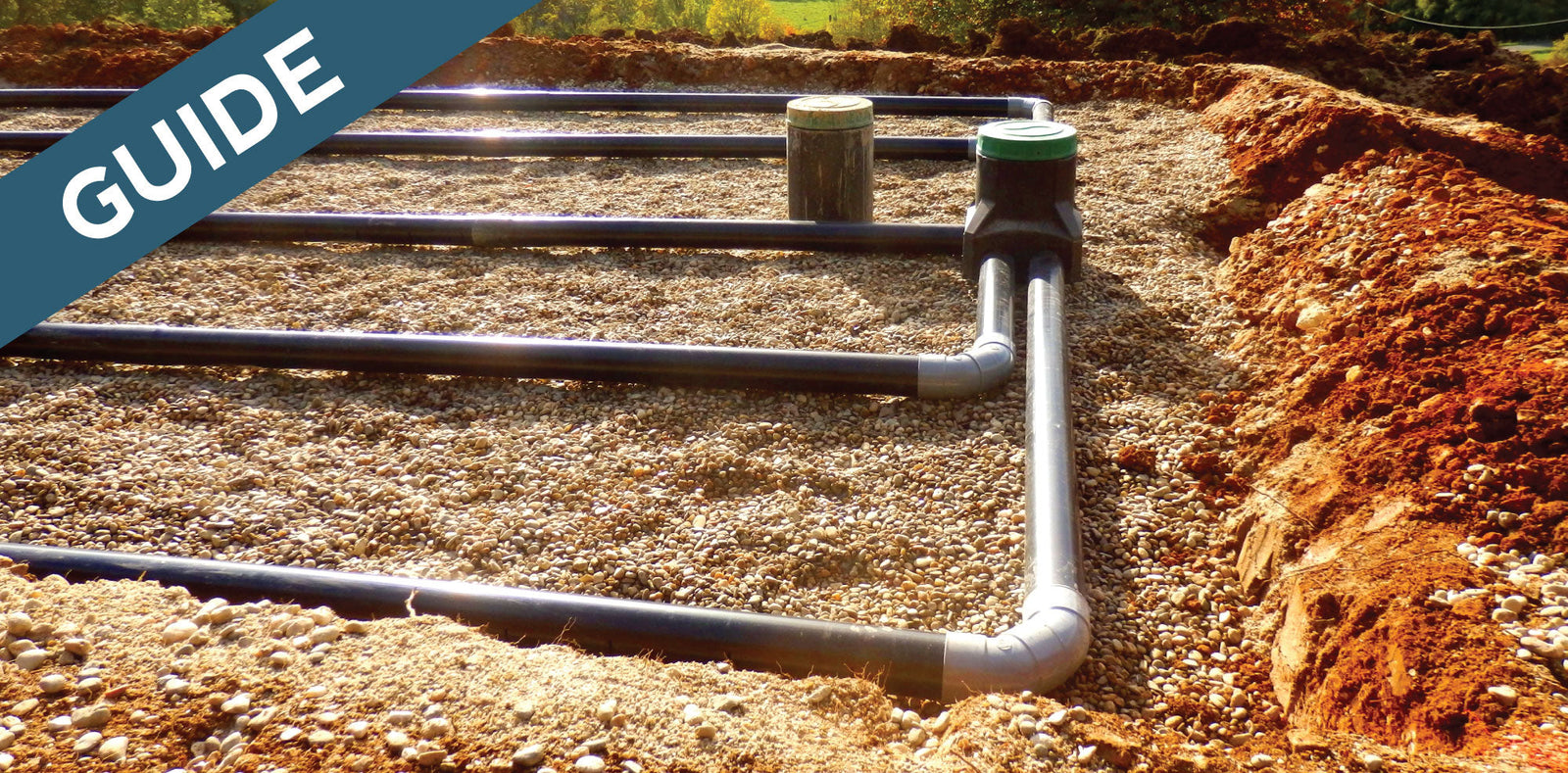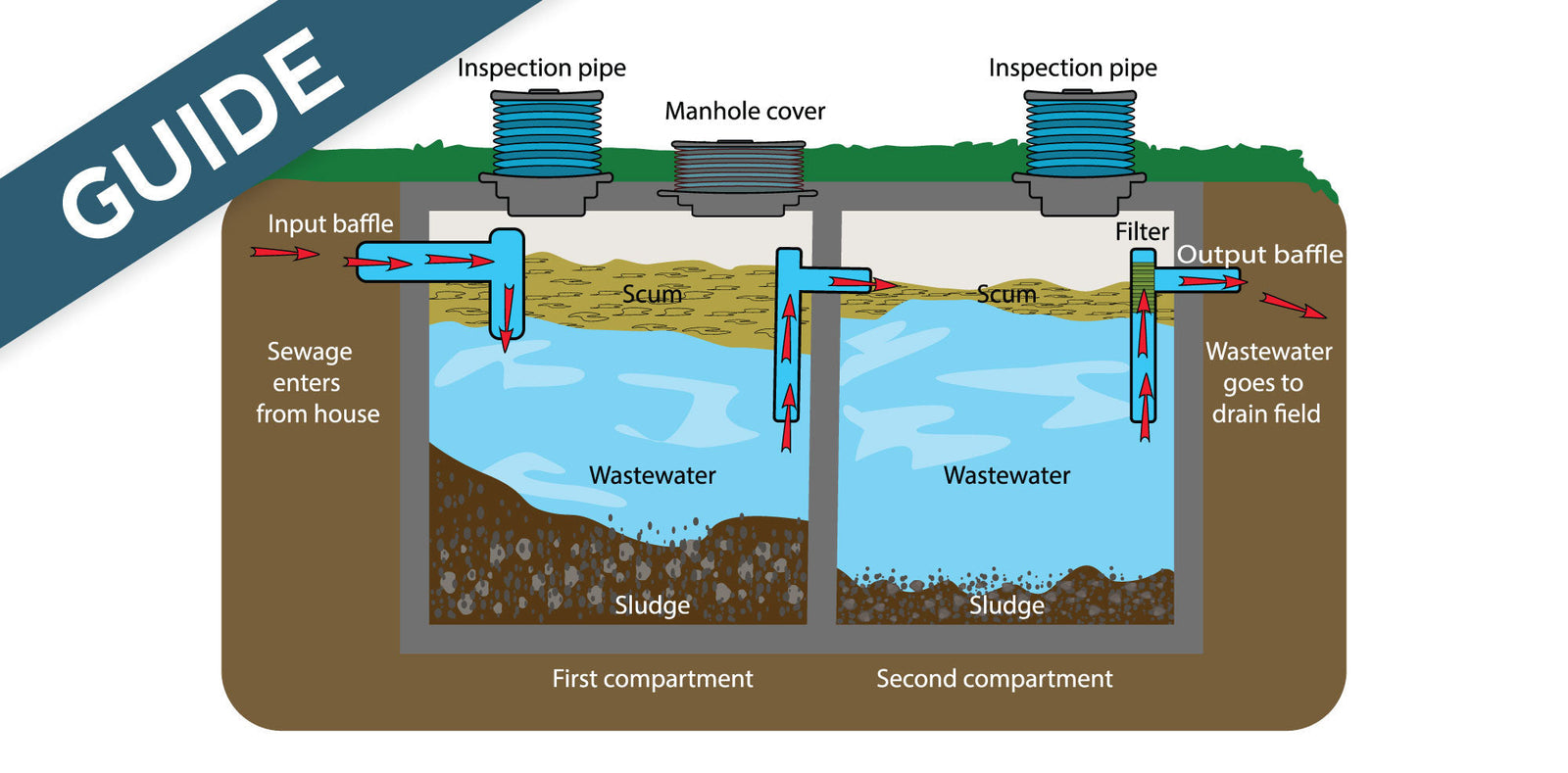Key Points:
- It's very important that you inspect your system (or have it professionally inspected)! Inspecting your system will help you to avoid expensive repairs and extend the life of your system by stopping problems early and allow you to know when your system should be pumped.
- Step 1 is locating your system. There are a variety of methods to do this (see below).
- Step 2 is opening and observing your tank. You should check that your tank is at the correct level, and that it's functioning properly.
- Step 3 is measuring your scum and sludge layer. Doing so will allow you to determine if your tank needs to be pumped. (See below for details.)
- Step 4 is cleaning your outlet baffle filter. Keep in mind: not all systems actually have an outlet baffle filter. (See below for details.)
- Step 5 is inspecting your drain field. This includes checking for odors and soggy regions, inspecting your lateral lines (if applicable), and checking your d-box (if applicable).
DISCLAIMER: There are extremely dangerous gases inside your septic tank that can be fatal if inhaled. Please take proper safety precautions when inspecting your septic system and/or contact a professional septic technician for guidance. We have compiled this article as a resource because many homeowners prefer to inspect their septic systems independently. If at any point you are uncomfortable with this process, we urge you to contact professionals and have them inspect your system!
Did you know that your septic system should be inspected regularly? In fact, you should have your system inspected at least once a year! Unfortunately, many people neglect this crucial maintenance step, and it can have disastrous consequences. So, in this article, we’ll explore how to inspect your septic system!
If you have your system professionally inspected, the cost will likely vary between $100 and $300. However, this article will give you some pointers on how to inspect your own septic system.
Why Inspect Your System?
First off, like we said above, you should have your system inspected or inspect it yourself at least once per year. Moreover, a septic system should be inspected when you purchase or sale your home. This will help prospective buyers to spot problems with a system and possibly increase the value of the home.
Inspecting your system will reveal a few key factors:
- If the system needs to be pumped.
- If there are any developing problems, allowing you to stop them early.
- By stopping problems early, extending the life of your system.
All in all, a septic system inspection is worth it; in fact, many states require regular inspections! Be sure to check your local laws and ordinances to see if your state is one of them.
Next, we’ve provided a step-by-step overview of how to inspect your septic system.
Step 1: Locating Your System
Many homeowners have no idea where their septic system is located! So locating your septic system is a crucial first step in any inspection. Below are some ways you might locate your septic tank:
- If you have an “as-built” diagram of your home, then the location of your septic tank will likely appear on it. If you don’t already have this diagram, your local health or zoning agencies may have access to it.
- You can contact the previous owner.
- Some tanks have risers that will be visible above ground.
- You can use a metal detector to locate the tank and portholes.
- You can have a professional locate your system.
Step 2: Opening Your Tank and Observing.
DISCLAIMER: There are extremely dangerous gases inside your septic tank that can be fatal if inhaled. Please take proper safety precautions when inspecting your septic system and/or contact a professional septic technician for guidance. We have compiled this article as a resource because many homeowners prefer to inspect their septic systems independently. If at any point you are uncomfortable with this process, we urge you to contact professionals and have them inspect your system!
Once you've located your septic tank and portholes, the next step is to excavate the area over your inlet and outlet ports. Luckily, you only have to do this once. You should keep the lids on the septic tank at all times (unless you're inspecting), but many people choose to purchase risers that allow them to have easy access to their septic tank without excavating it a second time.
Once you've excavated your portholes, you should check for these factors:
- Is your tank functioning properly? The scum layer inside your tank should look like a rich layer of soil on the top. Also, odors should be relatively mild, and the level should be equal with the base of your outlet pipe.
- Is your tank at the correct level? If the scum layer inside your tank is covering the baffle (or is very close), then the tank is too full and needs to be pumped. Also, this could mean that the outlet baffle filter is clogged (more on this below). If the scum layer is far below the baffle (i.e., nowhere near level with the base of the outlet pipe), then your tank might be leaking. If you observe any of these problems, call a professional!
Step 3: Measuring Your Scum and Sludge Layer
Measuring your scum and sludge layer can give you additional information about whether or not your system should be pumped. Before you begin this step, you’ll need to purchase or construct a measuring stick (it should be at least 10 feet long). You can construct a measuring stick out of PVC pipe, placing a 90-degree elbow on one end of the stick with a small portion of pipe (about 6 inches long) extending from the elbow. Also, you can construct a measuring stick from a 10-foot section of two-by-four or two-by-two board and connect a flat piece of board to one end.
Measuring Your Scum Layer:
Place one end of your measuring stick onto the surface of the scum layer. Put a mark on your measuring stick level with the opening of your porthole. Next, make a hole in your scum layer, and insert your measuring stick with the 90-degree elbow (or flat piece of board) facing down. Move your measuring stick sideways and pull up until you feel the resistance of the bottom of the scum layer against the 90-degree elbow or flat piece of board. Put a mark on your measuring stick level with the opening of your porthole. The distance between the two marks you made is the thickness of your scum layer. If your scum layer is more than 6 inches thick, the tank should be pumped.
Measuring Your Sludge Layer:
To make measuring your sludge layer easier, you can wrap one end of your measuring stick with Velcro as you first construct it. The Velcro will allow you to more easily view the stain of the sludge.
Insert your measuring stick through the hole in the scum layer and push it all the way to the bottom of your tank. Allow to sit for three minutes. Pull the stick out and measure the stain of the sludge on the stick. If the sludge depth is more than 12 inches, you should have your tank pumped.
Step 4: Cleaning Your Outlet Baffle Filter
Inside your outlet baffle, there is normally a filter that helps to prevent solids from entering your drain field (note: some systems do not have a filter). It is important that you regularly clean your outlet baffle filter.
Pull the outlet baffle filter halfway up and let it sit for about 15 minutes. This will help to ensure that no solids enter your drain field while you pull the filter out. After about 15 minutes, pull the filter out completely. Placing the filter in a five-gallon bucket, rinse the filter with clean water. After you have rinsed the filter, safely dispose of the dirty water (you can, for example, pour it back into the inlet side of your tank). Put the filter back inside the outlet baffle.
The last thing you’ll need to do is secure all your porthole lids back into place, and then you’re done with the inspection of your septic tank!
Step 5: Inspecting Your Drain Field
In a typical gravity system, there will be ports that will allow you to check your drain field. (With that being said, not all systems have ports!) The first step is to locate these ports (if you have them).
Next, check the drain field area for odors or soggy regions. If your system has inspection ports, open the ports. If there is standing water in your inspection ports, you should have your system professionally inspected.
Checking Your D-box:
At the point where your lateral lines (the PVC pipes that are buried under your drain field) separate, there is typically a d-box (i.e., a distribution box). Not all systems have a d-box, and not all are accessible. Check your “as-built” diagram to determine whether or not your system has a d-box and if it is accessible.
If you can access your d-box, check for any clogs or solid waste. Also, check to see if the waste water is flowing evenly into each of the lateral lines and if any noticeable leaks or cracks are present. If there is solid waste inside your d-box or if waste water is not flowing evenly into your lateral lines, this means you may have a clog on your hands. We recommend that you contact a professional for more help.
Conclusion
Whether you choose to go the professional route or do it yourself by following the guidelines given above, it's crucial that you have your system inspected regularly. Your system will thank you in the long run! Though an inspection can be a bit of work, it’s worth knowing how your system is performing and if it's doing its job. Using a high-quality septic tank treatment is also a great idea if you want to increase the longevity of your system. Unique products use only the best ingredients to increase the microbe counts in your tank, which means less issues for you! Check out our products my following the link posted here.
We hope that this article has proved helpful as you inspect your septic tank! We would love to answer any of your questions or concerns. Please feel free to reach out to us at support@uniquemm.com.





